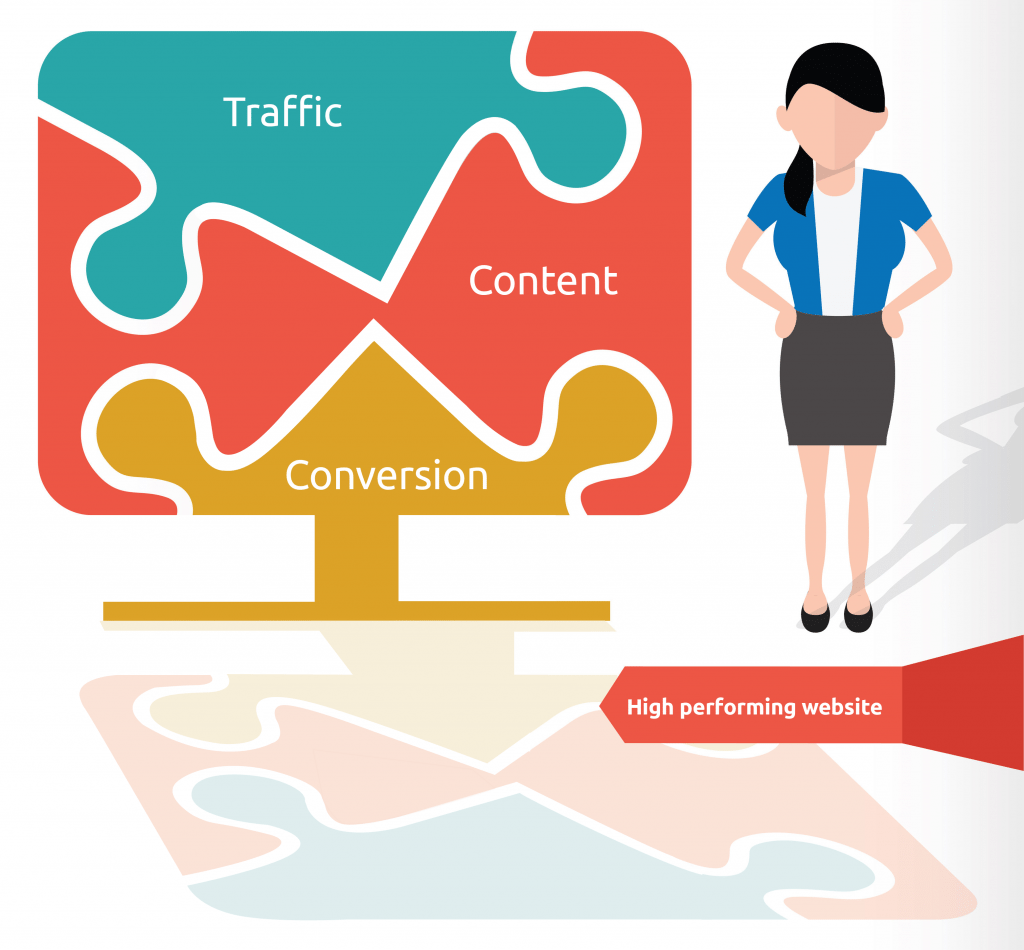Websites are no longer glorified brochures.
They are highly interactive, well-designed, high-performing machines that generate continual leads for your accounting business.
Many of you reading this are thinking, “But that doesn’t sound like my website.”

If it doesn’t, you’ve got some work ahead of you. But don’t despair – as my good friend Danetha Doe says, “The best marketing is stackable.” Tweet this!
You start with a simple, clean, modern site. You spend time on a good landing page, or a great blog post, or an infographic. Then more of the same. Then perhaps some events or video. And it all stacks on top of each other so that over time it builds to a place where your prospective clients love to come.
So here are the three critical elements you need for your website to become that lead generation machine:
1. Great content.
First and foremost, you must have great content.
Not just ‘good content’ – that’s a start, but it’s not enough. For your website to perform at the dream level, your content must be:
- Targeted
..to your niche market or audience.
- Well-written
…by someone who knows what they’re doing.
- Short and sweet
…because people don’t read, they skim.
- Focused on conversion (see point 3)
…so that over time you’re building your database of prospects.
2. Targeted traffic.
It’s tempting to simply want ‘more traffic’. I was originally thinking of entitling this one ‘heavy traffic’ – but that’s not actually what you want. Your goal is not to have anyone and everyone coming to your website. You don’t serve everyone.
Understand clearly who you do serve, and target them.
The more targeted your audience, the easier your marketing becomes. Looking to work with veterinarians? That’s a good start. But what about vets who are located in North Carolina and who employ at least three people and have a specialty of some kind?
Lead generation and traffic targeting is a specialised area of marketing – and it’s one that you don’t want to spend too much time and effort on before you’ve addressed your strategy and your great content (see point 1). Otherwise you’re getting loads of traffic, but they’re leaving without doing anything. Which brings us to…
3. Consistent conversion.
The combination of great content and targeted traffic will ideally result in more website visitors of the type you want. Once you’ve reached that stage, you can begin addressing conversion issues. You can use Google analytics to determine:
- What pages are being visited?
- How long do your site visitors spend on that page?
- What pages do they go to next?
- What action do they take on each page?
- What links are not being clicked?
- What pages are visited and then immediately left?
- What countries or geographical areas are your visitors from?
- What keywords do they type in to find your site or page?
Taking all those questions (and their answers) into consideration will help you identify what changes you will make to your website.
For example, if you have a website landing page that many people are clicking through to (say, for example, they type in ‘IR35 for contractors’ and then land on your page), but they are quickly leaving, you need to find out why. Is it because you don’t mention IR35 specifically? Do you mention it but only in general, vague terms? Is there no call to action? Does the call to action require them to fill in fourteen fields, their mother’s maiden name, and a 200 word essay? (I’m being only slightly sarcastic here – some websites seem to ask for my life’s details before I can have a “free” five page report. Not worth it.)
Consistency is also the key. You might get a fluke for a while with people clicking on your link, but then over time they get bored or discover it’s not for them or the topic is no longer relevant. You want to stay on target, and continue to adapt your site for consistent conversion.
Create – test – and repeat. That’s the cycle.
It’s also why marketing feels like a very woolly science: because in some ways it is. But it’s also something that you can test, and that’s where the solid numbers and research come in. The biggest businesses spend months preparing their research, and they’re never done. A/B split testing, marketing analytics, and new ideas are on a continuous cycle of content, traffic and conversion.
